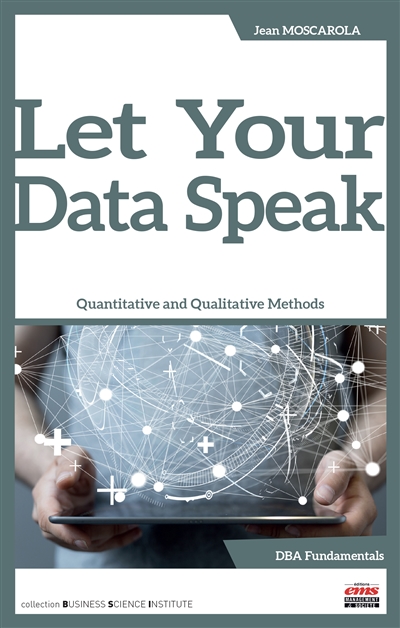par Moscarola, Jean
Editions EMS ; Imprimerie Sepec Numérique
-
-
Disponible - 652.3 MOS
Niveau 3 - Gestion
par Moscarola, Jean
Editions EMS ; Imprimerie Sepec Numérique
-
Disponible - 652.3 MOS
Niveau 3 - Gestion

Professeur en sciences de gestion, l'auteur présente les méthodes quantitatives et qualitatives utilisées en sciences sociales pour produire des connaissances. L'accent est mis sur les technologies de l'Internet et de l'intelligence artificielle. ©Electre 2022

Let Your Data Speak
Data include texts, articles, books or documents, numbers in economics or statistics, conversations, interviews, questionnaires, images, and anything we see or observe. We apply our culture and knowledge to approach them so we can understand the world or take action.
This book presents the quantitative and qualitative methods used in the social sciences to produce knowledge by combining theoretical conceptualization with empirical observations - in other words, making data speak in the spirit of the scientific method !
On the basis of numerous examples, it highlights the complementary nature of these methods and gives readers the understanding they need to identify the most appropriate methodology for the particular research question and field. There is an emphasis on online technologies and artificial intelligence, which provide an opportunity to combine quantitative and qualitative approaches and stimulate the development of traditional approaches.
This book is intended both for students who are just discovering these methods and want to learn how to implement them and for experienced researchers and research directors. They will find a wealth of material that will help them polish their research practices and enhance their skillsets.
Disponible - 652.3 MOS
Niveau 3 - Gestion